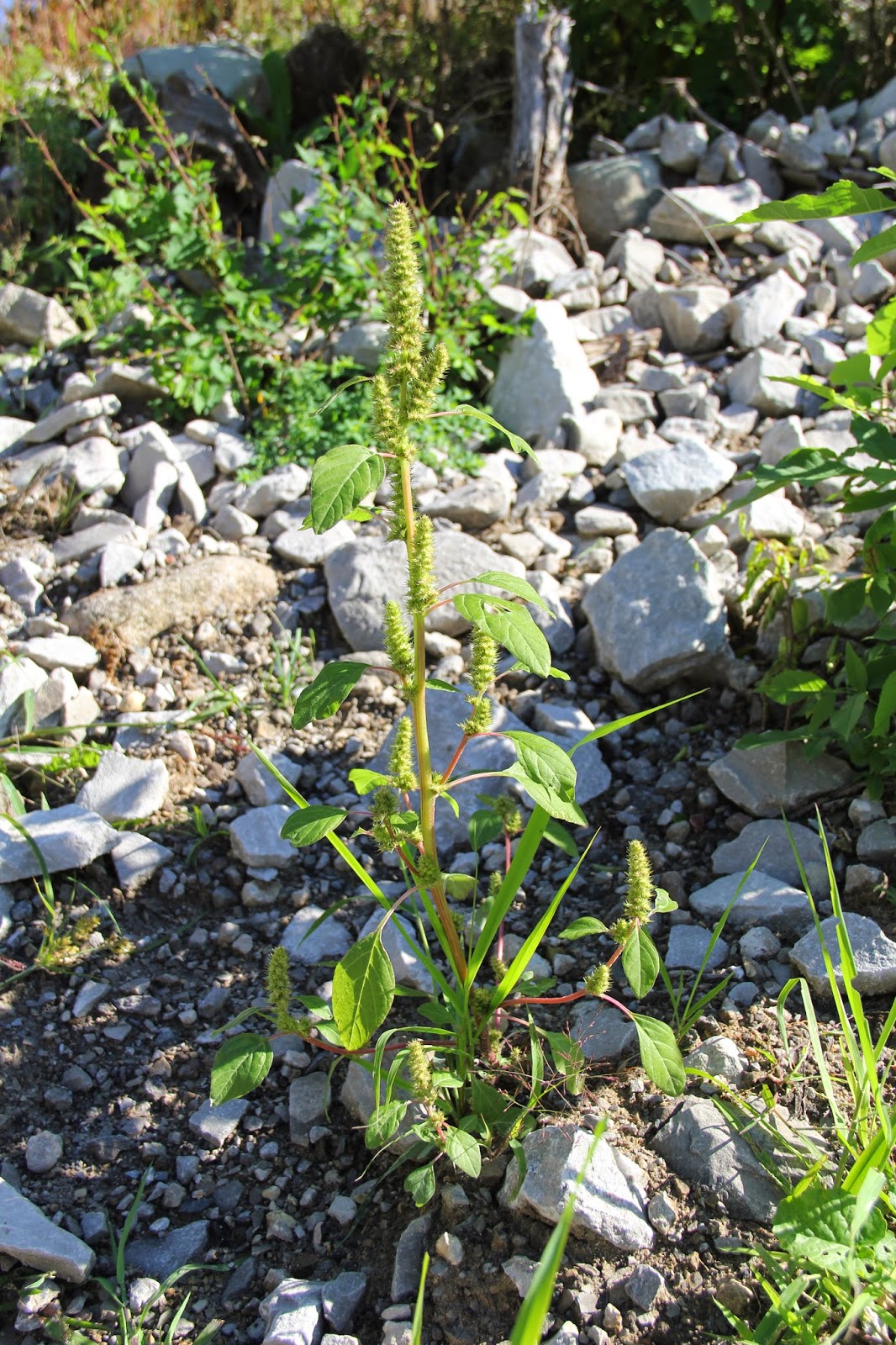Wildflowers of 2014 - #234 Cheerful Sunflower (Helianthus x laetiflorus)
This flower had me stumped. It was obviously a sunflower, but it didn't quite fit the descriptions of any of the sunflowers found on the Michigan Flora website. The description of the Stiff Sunflower (Helianthus pauciflorus) mentioned a hybrid with Jerusalem Artichoke (H. tuberosus). This hybrid is known as the Cheerful Sunflower (Helianthus x laetiflorus). After researching this plant on several websites, I decided that this was probably my mystery sunflower.
 |
| A colony of Cheerful Sunflower (Helianthus x laetiflorus) |
Cheerful Sunflower, which is also known as Hybrid Prairie Sunflower and Mountain Sunflower, is a perennial that reaches heights of 1 1/2 to 8 feet. It has opposite leaves. The leaves and stalk are both hairy. The stalk varies in color from green to purple.
 |
| Cheerful Sunflower - note the opposite leaves and several flower heads |
Plants produce one to several flowers. The flowers consist of a central disc surrounded by 10 to 20+ rays (petals). The rays are bright yellow and the disc may be a darker yellow or brown or purplish.
 |
| Cheerful Sunflower - note the many petals and small crab spider waiting for a meal |
Everything that I could find about this sunflower seemed to fit my mystery plants so I am calling it a Cheerful Sunflower. If anyone disagrees with this identification and can provide an alternate ID, please let me know.
Wildflowers of 2014 - #235 Frost Aster (Symphyotrichum pilosum)
The next two species are often confused because they are both Asters with many small white flowers and small leaves. In February 2014 I wrote a post about how to tell the Frost Aster (Symphyotrichum pilosum) from other small, many-flowered Asters. Please look here for more information. This species is also known as Hairy Aster.
 |
| Frost Aster (Symphyotrichum pilosum) |
 |
| Frost Aster - a closer view of the flowers |
Wildflowers of 2014 - #236 Heath Aster (Symphyotrichum ericoides)
Heath Aster (Symphyotrichum ericoides) differs from the previous species by having leaves that are both smaller and more numerous. It also typically has fewer rays (petals) on each flower than the Frost Aster. Individual flowers are also smaller 1/4 to 1/2 inch versus 3/8 to 3/4 inch. Both the Heath Aster and Frost Aster can reach heights of 1 to 4 1/2 feet tall. Both plants grow in open dry habitats - I found both of these flowers growing within yards of each other.
 |
| Heath Aster |
 |
| Heath Aster - note the many small pointed leaves |
Wildflowers of 2014 - #237 Redroot Amaranth (Amaranthus retroflexus)
The final flower of the day was Redroot Amaranth (Amaranthus retrofexus). This species is also known as Rough Amaranth or Rough Pigweed. It is a common weed of disturded areas and agricultural field. It is found across almost all of the United States and Canada. There is some debate over its origin. The USDA lists it as native to the Lower 48, but introduced in Canada and Alaska. Michigan Flora says the plant is not native to Michigan, listing its origin as the eastern United States, but ackowledges that it was found in the state's first plant survey in 1838.
 |
| Redroot Amaranth grows well in disturbed areas |
This species can grow to be quite large (up to 7 feet), but is typically much shorter. It has oval shaped leaves. The plant has spikes of small green flowers on both the main stem and branches.
 |
| Redroot Amaranth flower spikes |
No comments:
Post a Comment